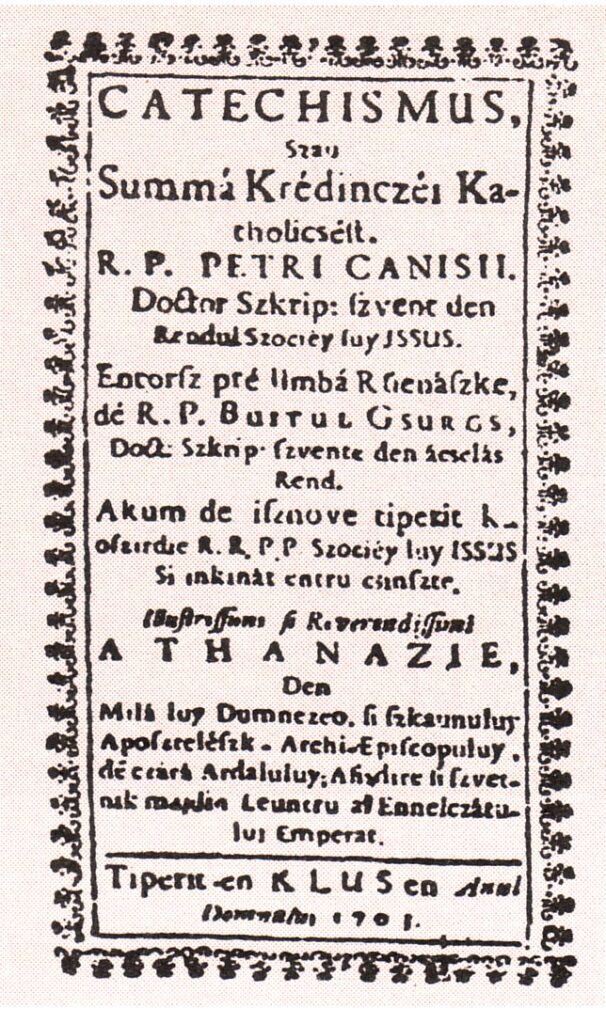In a constantly changing world where technology and innovation are transforming our lives, it is important to remember the roots of our culture and language. In this context, the name of the KlusAI initiative was not chosen by chance, but represents a tribute to a significant event in the history of the Romanian language.
KlusAI: The Connection to History and Inspiration from the First Book Printed in Romanian Using the Latin Alphabet
The name KlusAI originates from George Buitul, a Romanian Jesuit from the 17th century and a professor in Alba Iulia. He played a crucial role in promoting the Romanian language and education, being the one who published the first translation of Petrus Canisius’s catechism into Romanian. “Summa Kredinczei,” written as it was at that time, is the first book printed in Romanian using the Latin alphabet.
On the title page of the second edition of the work, the text “Tiperit en Klus en Anul Domnului 1703″ can be found, which in today’s language translates to “Printed in Cluj in the year of our Lord 1703.” This historical moment represents a reference point in the evolution of the Romanian language and the literacy of its speakers. Cluj is, of course, also the city where KlusAI was founded.

By choosing the name KlusAI, our team expresses respect and admiration for the pioneers who contributed to the development of the Romanian language and the promotion of knowledge. At the same time, KlusAI aims to carry forward this legacy through research and innovation in the field of artificial intelligence applied to the Romanian language. Thus, KlusAI takes on the mission of contributing to the development of AI technology in Romanian, to ensure an inclusive and equitable future for Romanian speakers.
By rediscovering and honoring our history in this way, KlusAI is inspired to build a future in which the Romanian language and our culture hold a prominent place in the digital and artificial intelligence era.
